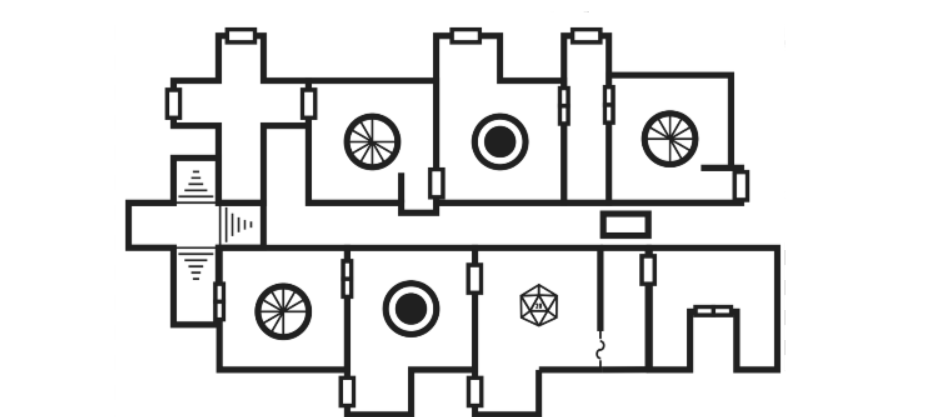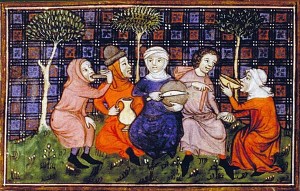When starting a new campaign one of the first questions that inevitably comes up is …how did your player characters meet? Trying to piece together how everyone knows one another isn’t usually the most exciting aspect of kicking off a new adventure. However, if done correctly, bonds between player characters can help immerse players more deeply into the campaign. Characters with history that ties them together can make it much easier for the DM to move the campaign along.
Sadly a large number of campaigns start out the same way … you meet in a tavern, someone needs help, you all take the job and by golly you’re suddenly a party on your way to save the day. The downside to simply meeting in a common physical location – there is usually very little holding the party together to prevent them from going their separate ways once the job is completed.
Pre-existing bonds
One thing I have found very helpful in past campaigns with 3 or more player characters, is to have the characters establish preexisting (ideally friendly) bonds with at least two other player characters. This makes it much easier to form a party because each character will already know two people they can introduce to one another.
Here’s just a few examples of pre-existing bonds players can use for their characters:
- Grew up together
- Went to school together
- Business partners (buy/sell goods from one another)
- Coworkers – work for the same employer
- Military bond – fought in a war and/or trained in military together
- Relatives (if same/similar races – both Dwarves for example or an Elf & Half-Elf can be half siblings)
If you are looking for more ideas – think about how you’ve met friends in real life.
Pre-existing Bonds Walkthrough
Let’s start out with four player characters – a Rogue, Cleric, Druid and a Fighter. For the purposes of this example, each of the characters should know at least two of the other characters. We’ll also assume each of the characters have lived in or nearby the area for many months/years. Below is an example of how using a few of the bonds above could work.
Cleric relationships: Rogue, Druid
Druid relationships: Cleric, Fighter
Fighter relationships: Druid, Rogue
Rogue relationships: Cleric, Fighter
The Rogue and Cleric were raised together by a local church orphanage. The Cleric and Rogue obviously chose different career paths but consider one another family (“brothers”) and frequently spend time together. The Cleric is very overprotective of the Rogue constantly trying to “save” the Rogue and have them repent their stealing ways.
The Cleric is frequently in need of healing potions for injured townsfolk and adventures. The Druid, a skilled herbalist, comes into town regularly to sell their healing potions. Over the years the two have become very good friends and business partners.
The Druid has been called upon by the Fighter as a local guide on multiple occasions. The Druid (having the Outlander background) knows the area like the back of their hand and offers services as a local guide for a reasonable fee. The Fighter also has purchased healing potions from the Druid.
The Fighter knows the Rogue through a business arrangement. The Fighter has been buying/selling adventure loot to/from the Rogue on the cheap for many months courtesy of the thieve’s guild the Rogue is associated with.
Individual relationships are great and all but how did your player characters meet up to form a party?
With pre-existing relationships, meeting at a tavern can actually be a good thing. Continuing with the example above, let’s say the Cleric and Rogue are having a drink at the local tavern. The Fighter walks in and sees their business partner the Rogue and says hello. The Rogue introduces his brother from another mother (Cleric) and they all sit down to have drinks with one another. As the Fighter and Cleric get to talking they realize they both know the Druid. What a small world!
Preexisting bonds can make it a lot easier to tie the other party members into a new adventure. For example – a wealthy merchant has asked the Fighter for help tracking down a group of bandits that have intercepted their last two caravans. The Fighter has bonds with the Druid and the Rogue. The Fighter reaches out to the Druid for assistance navigating the local geography. They also reach out to the Rogue to see if they might have knowledge of any recently fenced goods belonging to the merchant. The Rogue lets his brother the Cleric know he’s leaving for a few days to help the Fighter hunt down bandits and being overprotective, the Cleric insists on tagging along. BOOM! There’s a party.
Using the ideas above will help player characters determine how their party met as well as give the DM background details that can be tied directly into a campaign. Bonds between characters are a great way to immerse players in the campaign as their characters will have a vested interest in one another.

